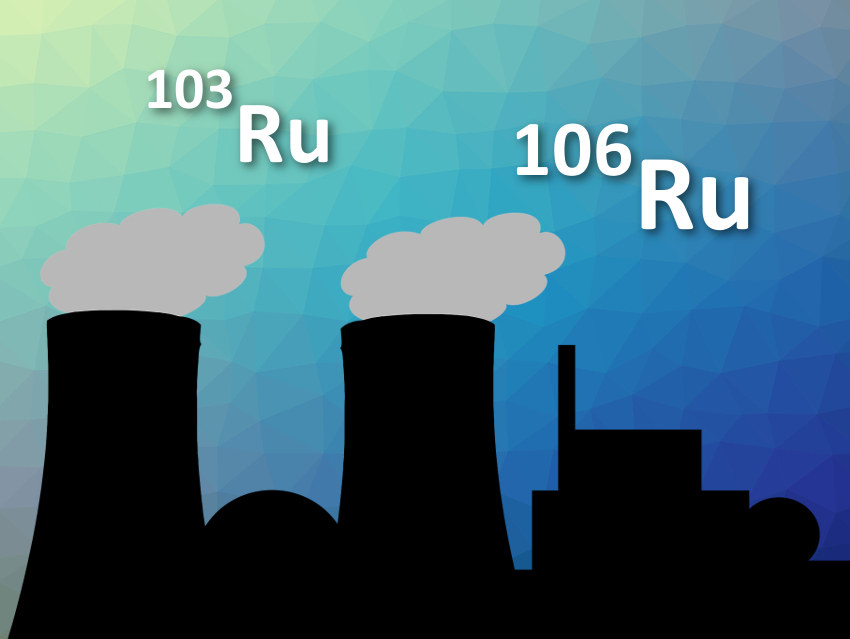In October 2017, a cloud containing radioactive 106Ru and traces of 103Ru moved across Europe. These isotopes are products of nuclear fission, which could stem from a civilian reactor or from a possible military use of plutonium. The exact source of the release has remained unclear and no country has assumed responsibility. Modeling indicated that the isotope release originated in the southern Urals [1,2], and the chemical characteristics of the releases Ru species suggest that the source was a spent nuclear fuel reprocessing facility. However, so far a military source could not be ruled out conclusively.
The source of the radioactive isotopes cannot be determined by analyzing only the radioactive Ru isotopes, because the 103Ru/106Ru ratio is a function of several unknown variables. In contrast, the composition of stable, fission-generated Ru isotopes depends on the fuel type and can be useful to determine the source.
Thorsten Kleine, University of Münster, Germany, Georg Steinhauser, University of Hanover, Germany, and colleagues have confirmed that the cloud originated from civilian nuclear activities. The team performed precise measurements of the stable isotopic composition of ruthenium captured in air filters in Vienna, Austria, before, during, and after the nuclear release. They chemically separated the ruthenium fractions from the air filters using an ion-exchange chromatography method. Then they performed high-precision multicollector inductively coupled plasma mass spectrometry (MC-ICPMS) measurements.
The ruthenium isotopic ratios in the filter that was in use during the release event are consistent with spent nuclear fuel from a nuclear power plant and a military background (such as the production of weapons-grade plutonium) can be ruled out. According to the researchers, the isotope signature is consistent with a specific type of pressurized water reactors, i.e., water-water energetic reactors (VVERs).
- Non-natural ruthenium isotope ratios of the undeclared 2017 atmospheric release consistent with civilian nuclear activities,
Timo Hopp, Dorian Zok, Thorsten Kleine, Georg Steinhauser,
Nat. Commun. 2020.
https://doi.org/10.1038/s41467-020-16316-3
References
- [1] Atmospheric modeling and source reconstruction of radioactive ruthenium from an undeclared major release in 2017,
O. Saunier, D. Didier, A. Mathieu, O. Masson, J. Dumont Le Brazidec,
Proc. Natl. Acad. Sci. USA 2019, 116, 24991–25000.
https://doi.org/10.1073/pnas.1907823116 - [2] Airborne concentrations and chemical considerations of radioactive ruthenium from an undeclared major nuclear release in 2017,
O. Masson et al.,
Proc. Natl. Acad. Sci. USA 2019, 116, 16750–16759.
https://doi.org/10.1073/pnas.1907571116



